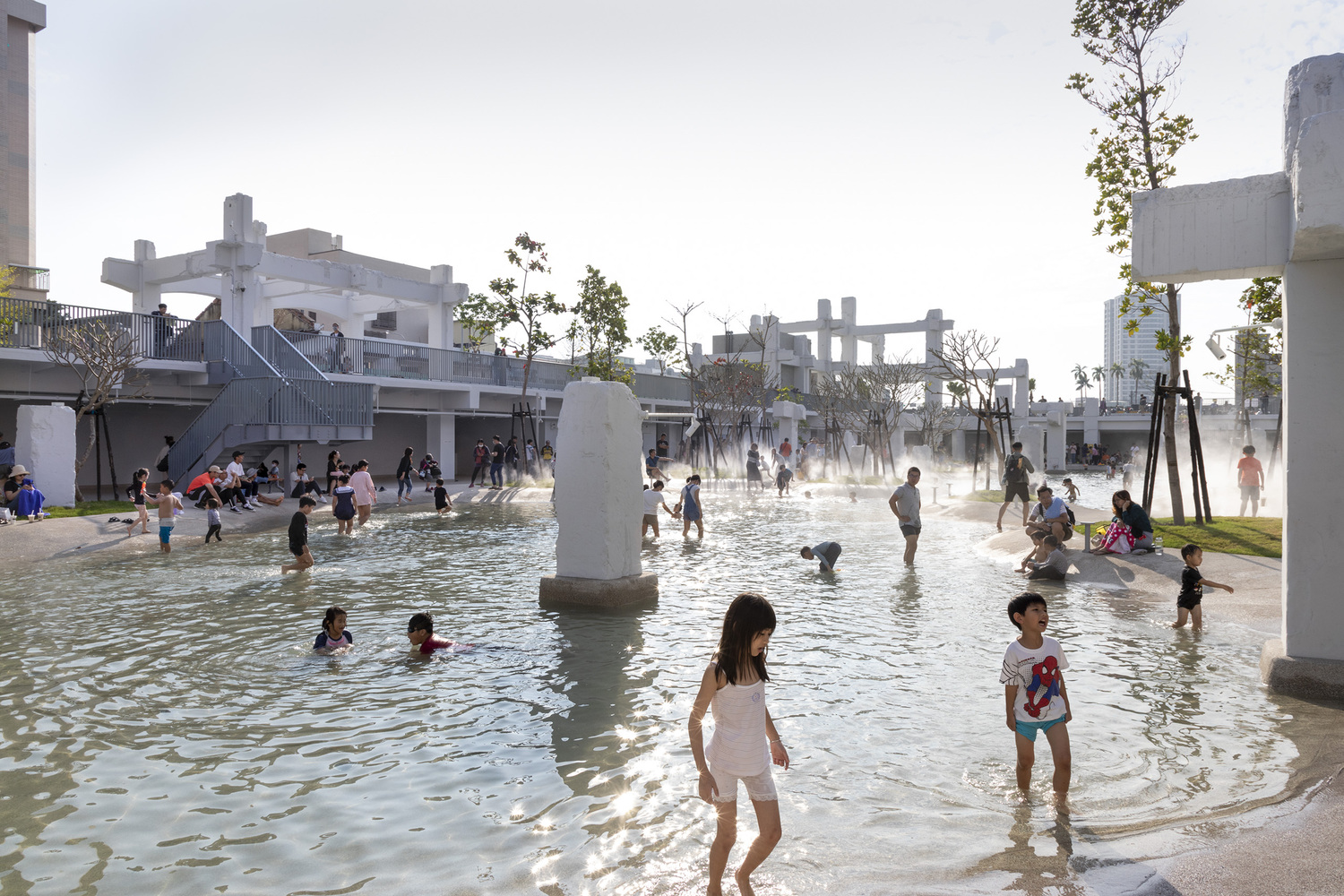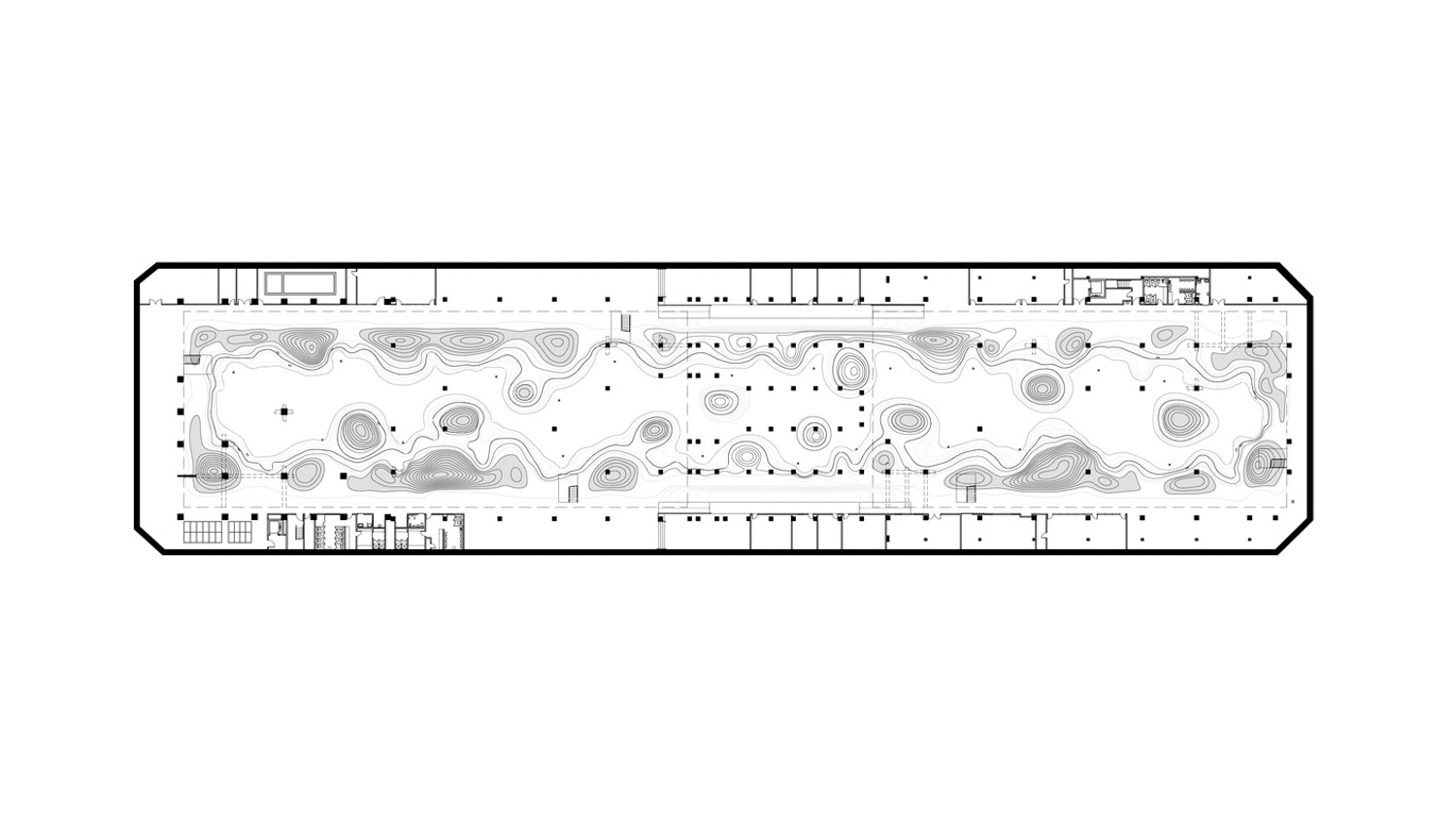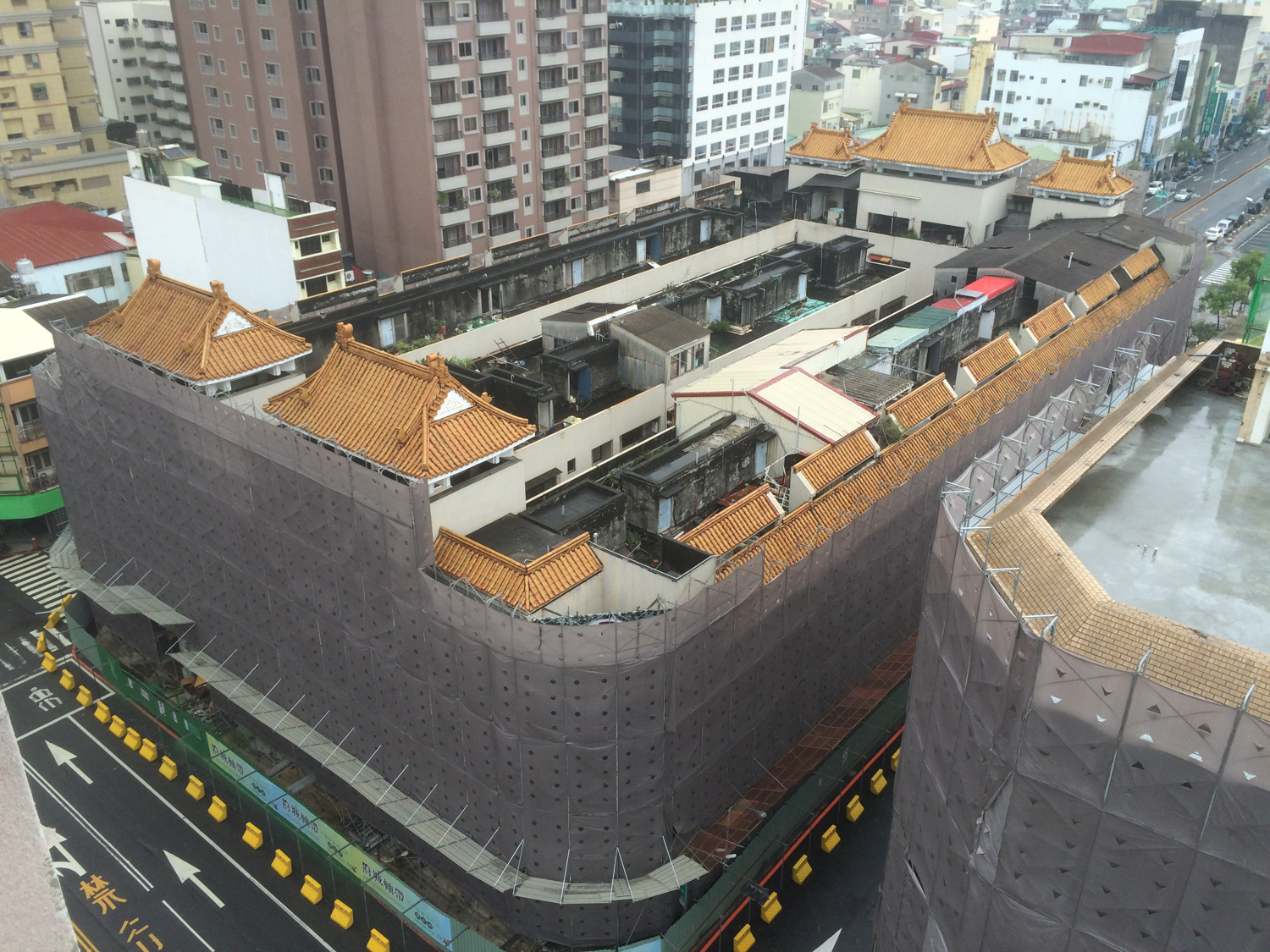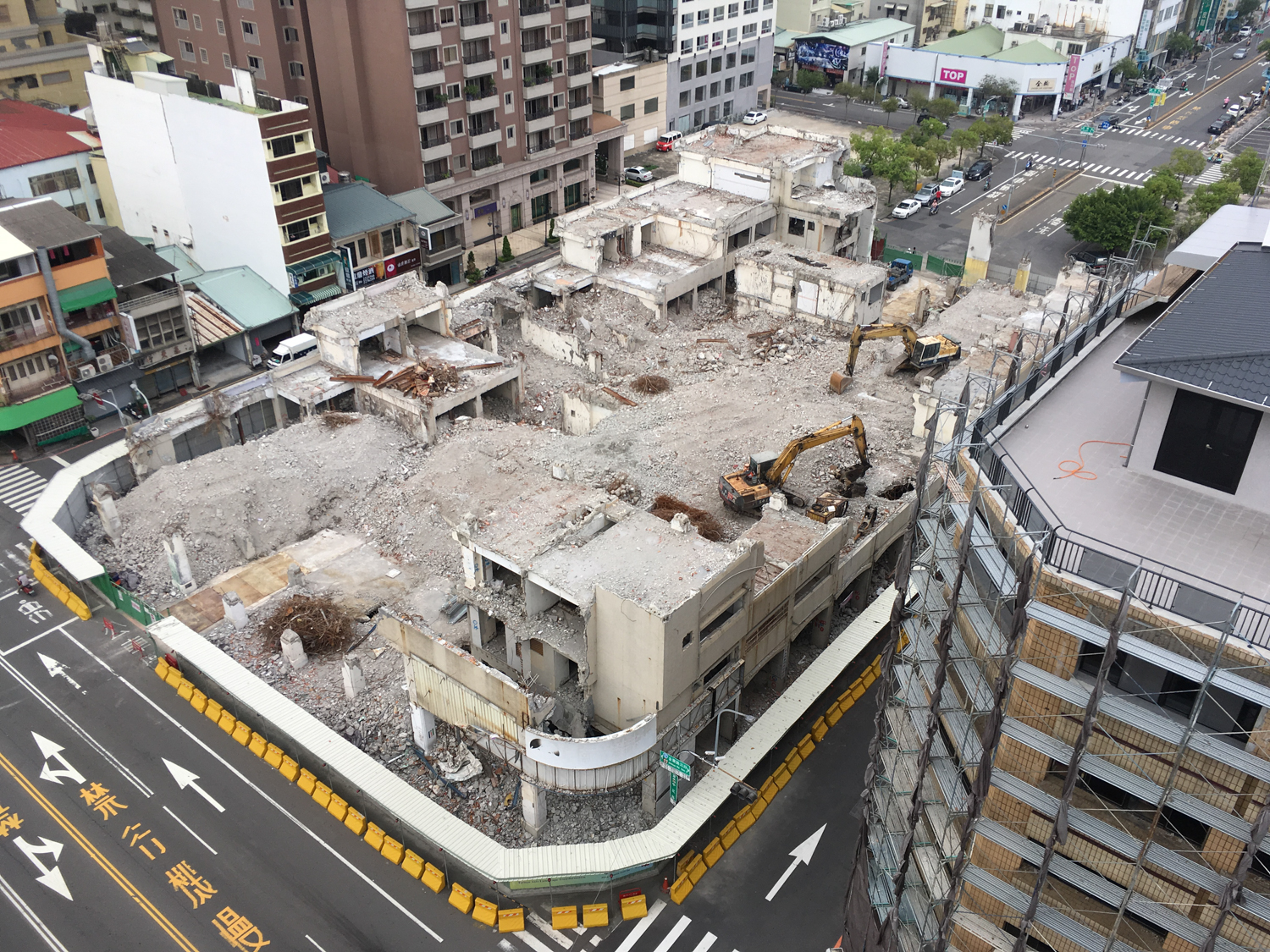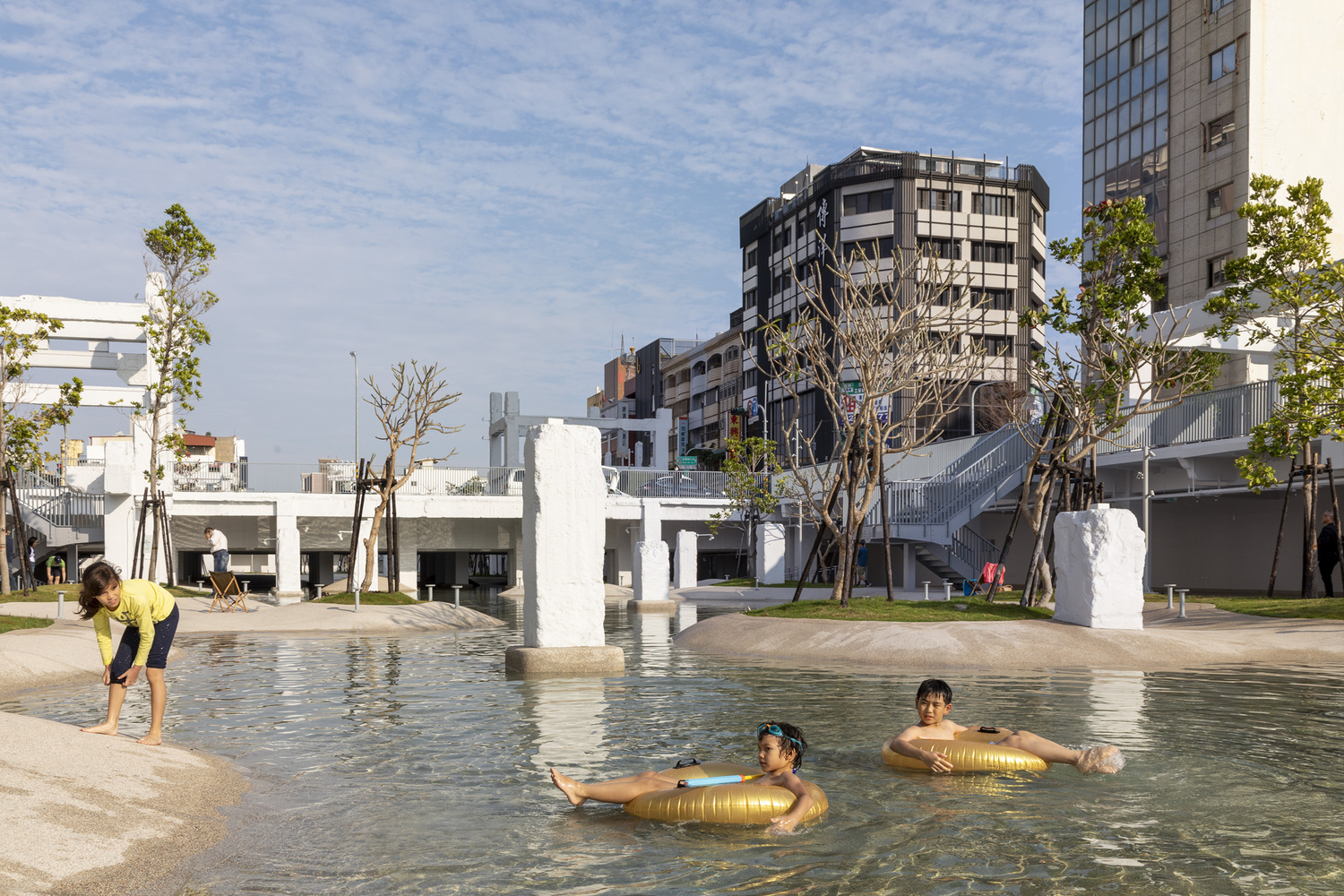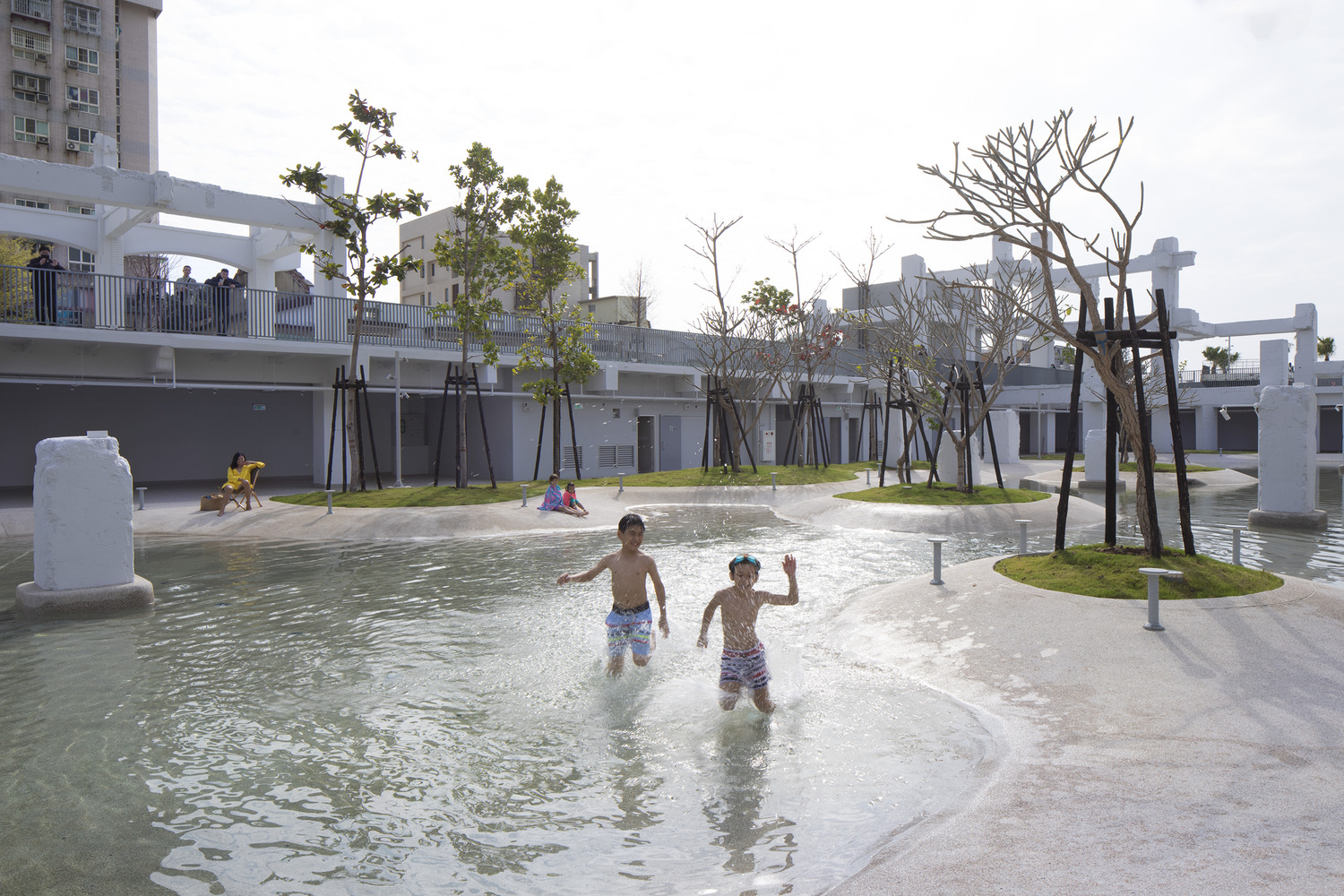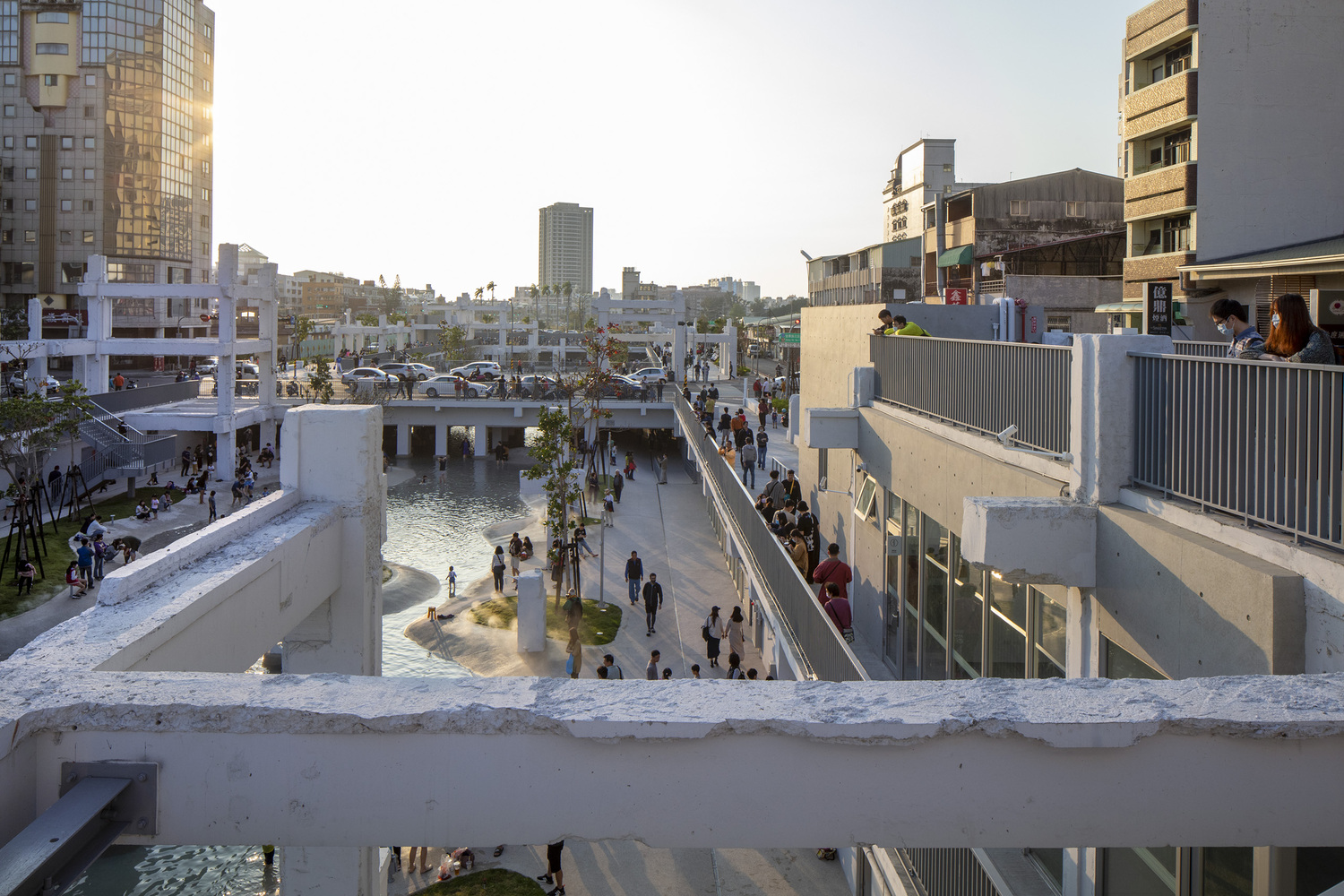MVRDV’S LATEST COMPLETED PROJECT IN TAIWAN, TAINAN SPRING EXEMPLIFIES THE PHILOSOPHY OF URBANISM, TRANSFORMING ONE OF THE CITY’S BIGGEST EYESORES INTO A BEAUTIFUL, URBAN LAGOON
TEXT: DANIEL CUNNINGHAM
PHOTO: DARIA SCAGLIOLA EXCEPT AS NOTED
(For Thai, press here)

Located on Taiwan’s southwest coast, Tainan has nearly four hundred years of history, making it the island’s oldest city with the most diverse range of architectural styles. Considering that Tainan was originally established by the Dutch, it seems fitting that Rotterdam-based architecture firm MVRDV should make it’s mark on the city. The firm’s Co-founder, Winy Maas invited art4d to join a tour of their latest projects in Tainan.
THE URBANIST
“MVRDV made its name not through architecture, but through narrative,” explained Maas during a lecture to architecture students at Tainan’s National Cheng Kung University. He believes that an architect’s role is to craft narrative within a space, which dissipates throughout the surrounding urban landscape, changing perspectives and forming new collective experiences. This is his take on urbanism; his grand scheme for the role of MVRDV in cities all around the globe.

His firm’s latest completed project in Taiwan, Tainan Spring exemplifies his philosophy of urbanism, transforming one of the city’s biggest eyesores into a beautiful, urban lagoon. The project is a culmination of five-years hard work alongside Tainan City Government and seven local firms. Maas hopes that Tainan Spring will raise awareness in Taiwan around the benefits of urbanism.
At the grand opening event on March 7, Maas was joined on stage by Taiwan’s vice president-elect William Lai, Tainan Mayor Huang Wei-cher and Deputy Mayor Sue Wang, along with project partners and other officials. It was quite a spectacle for the politicians, who were swarmed by local paparazzi, and also for MVRDV who seem to have made powerful connections in the Taiwanese establishment. Privately, Maas paid special thanks to the local project partners, without whom the project never would have reached completion.
The local partner architect, Ms. Li-Ju Li of The Urbanists Collaborative and LLJ Architects, shed more light on the background of the project. She says that it originated from the time when (Taiwan’s current vice president-elect) William Lai was mayor of Tainan between 2010 and 2017. He initiated an ambitious “green belt” urban regeneration project in the city, which Tainan Spring is just a small part of.
THE EXORCISM
What was surprising about Maas’ speeches at the Taiwan Spring preview and opening ceremony events, however, was that he never addressed public opinion around the project. The site of Tainan Spring is infamous among Taiwanese people; many of them believe that it’s haunted. These myths have grown in popularity overtime and it remains to be seen whether the new development will be able to fully exorcise its demons.
Prior to the project, a giant mall was situated in the location, which hadn’t seen good business for many years, and had become an eyesore. The old China-Town Mall was built in 1983 and featured an expansive underground level. It is from there that MVRDV began crafting a new narrative within the space, out into the surrounding urban landscape, and further into the thoughts of the local community. The architects left behind traces of the mall’s concrete structure, preserved in a museum-like manner, either painted in gallery-white or exhibited under glass flooring.
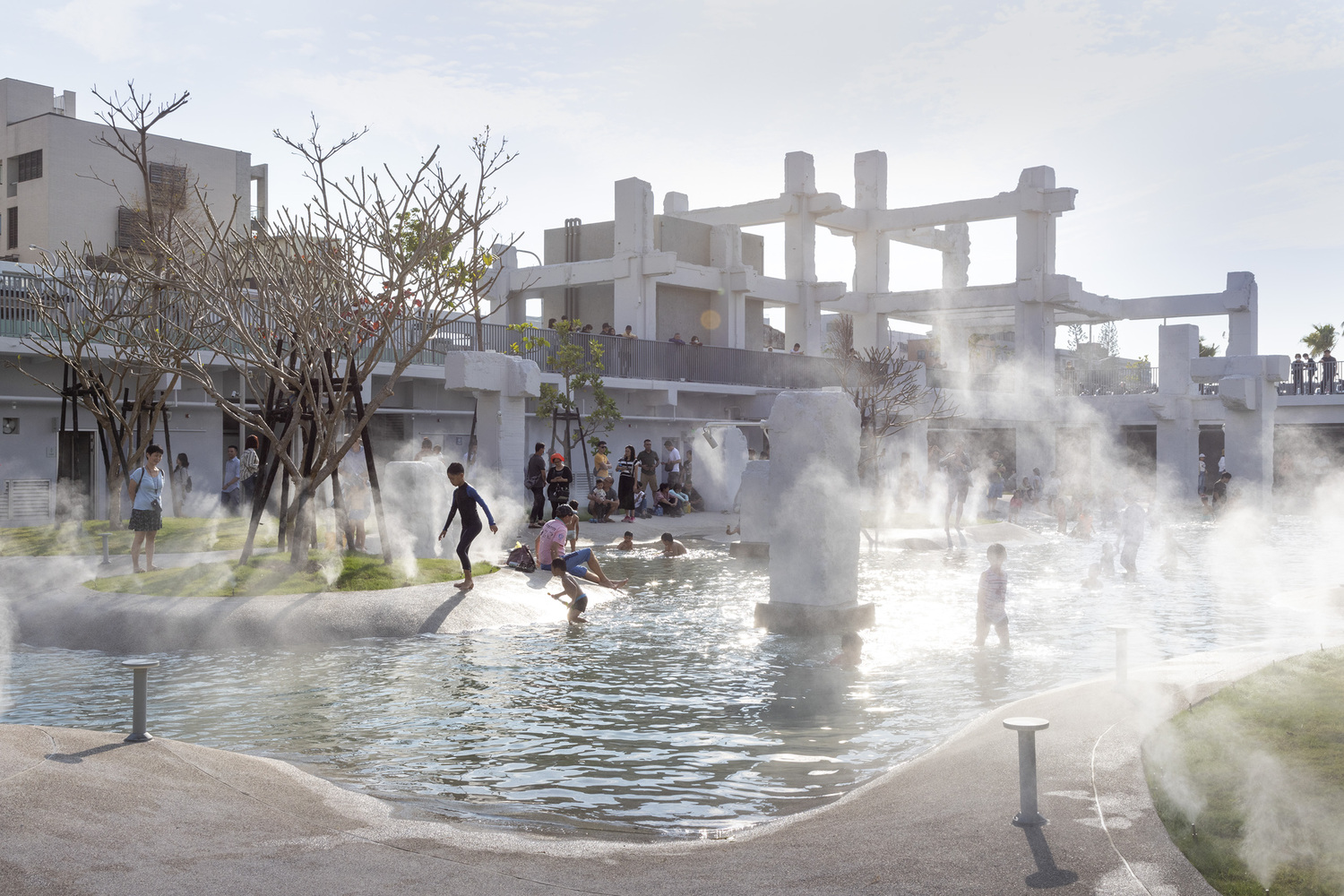
Even as we arrived at the site one day before its official opening, people were already taking photos beside the concrete ruins and checking in on Instagram. This demonstrates great potential as these people are clearly not put off by the site’s history. In the future, Tainan Spring could become one of city’s most popular tourist attractions.
TAINAN SPRING
Below ground level, Tainan Spring offers space for retail, cafes and restaurants, under shaded eaves that flank the waterside. The whole development acts like a sunken amphitheater with a beautiful oasis at its center. Passersby lean over the fences that surround the development, gazing down at a spectacle of leisure; families bathing and paddling in the turquoise waters.
At the center of the development, a bridge divides the space, offering shelter from the sun, and tiny islands with tropical trees rise up from the water. The flooring is made from polished pebbledash, mimicking the appearance of a sandy beach and offering a non-slip quality that’s perfect for swimming pools and similar environments. Since opening, the only design flaw has been the waterside lights, which look like stools for sitting on and break easily under a persons weight.
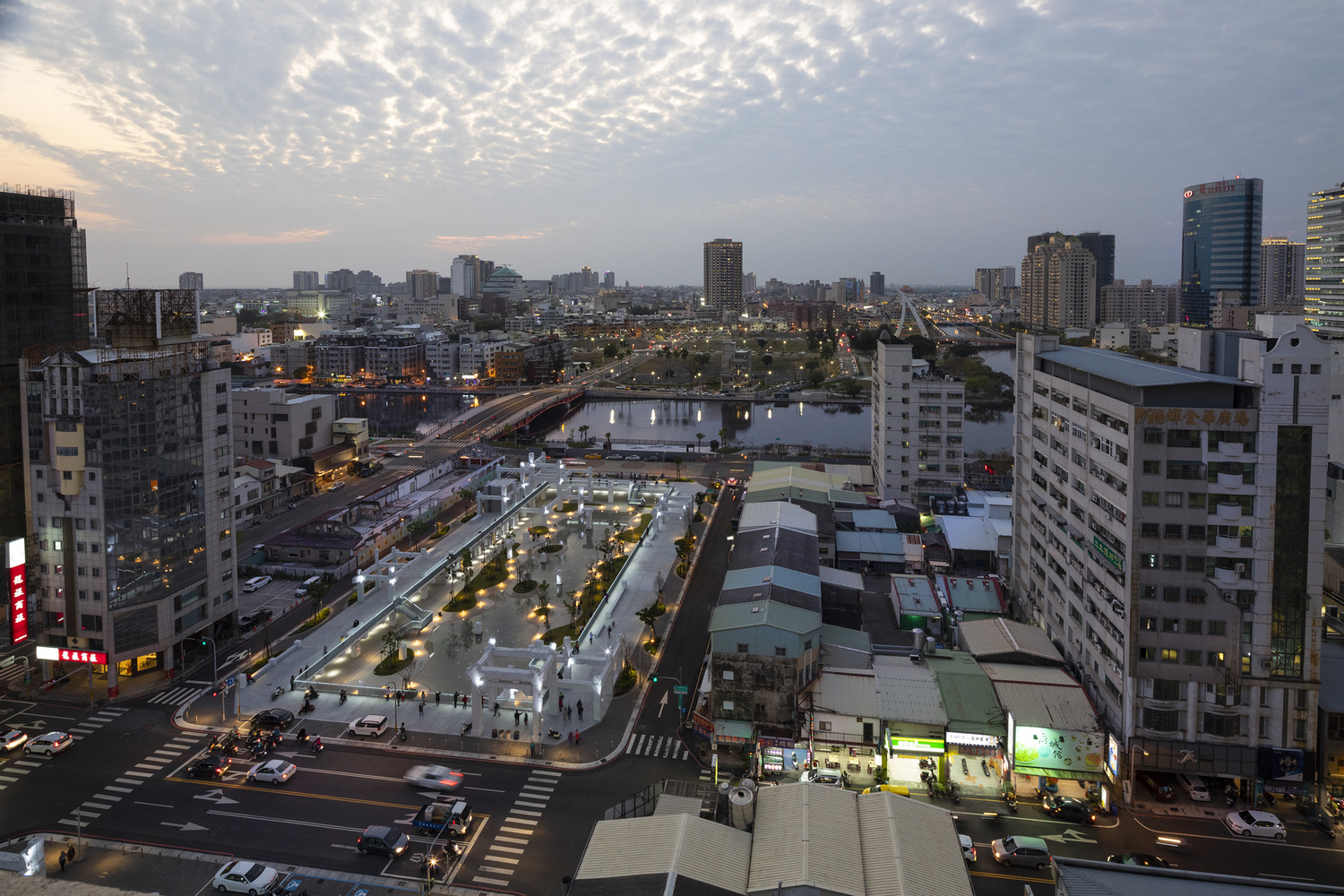
Despite this design flaw though, Tainan Spring looks beautiful when lit up at nighttime; shrouded in mist that spontaneously billows out from sprinkler nozzles at the water’s edge. This development oozes the kind of luxury that you’d expect from a five-star hotel, making one wonder whether it actually makes sense as a public space. Only time will tell if this development will be properly maintained and whether it will remain public or fall into the hands of private investors.

